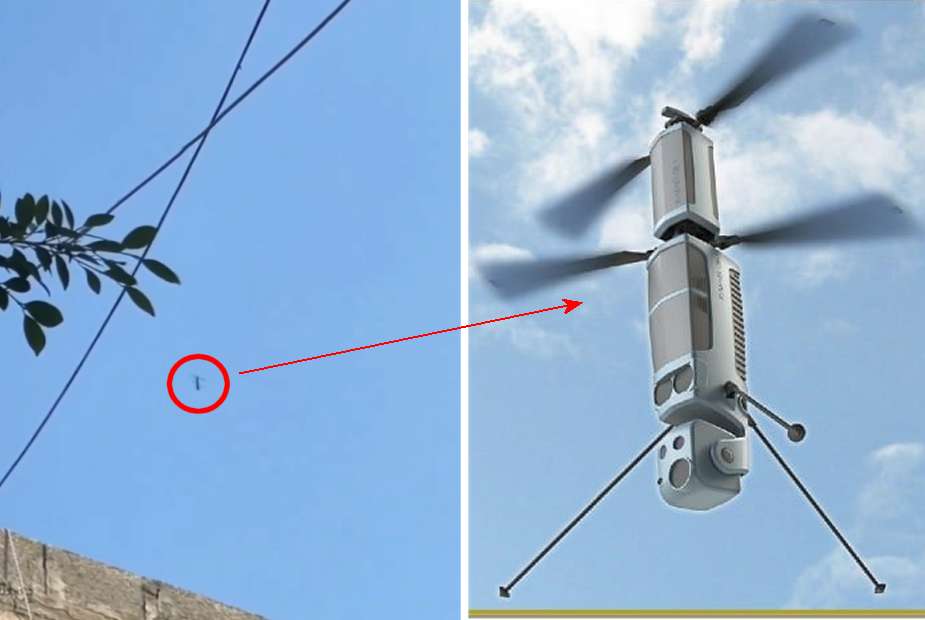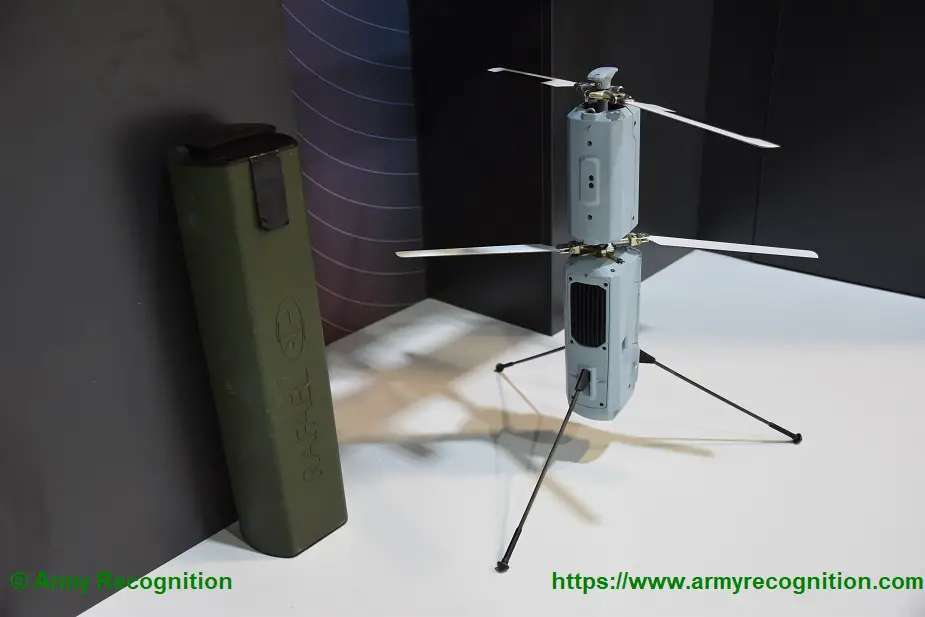Breaking news
Israeli Army Deploys Miniature Firefly Kamikaze Drones for the First Time in Gaza Strip.
The Israel Defence Forces (IDF) have reportedly deployed the Firefly miniature loitering drones for the first time in operational scenarios. A video published on Twitter on December 18, 2023, showcases these advanced drones being used to track Hamas militants in the Gaza Strip. The introduction of the Firefly drones marks a significant shift in the IDF's tactical capabilities, particularly in the complex and densely populated urban environment of the Gaza Strip.
Follow Army Recognition on Google News at this link

Spike Firefly miniature loitering drone of the Israel Defense Force is used for the first time to track Hamas militants in Gaza. (Picture source Twitter @BabakTaghvaee1)
The use of miniature loitering munitions like the Israeli-made Spike Firefly in urban areas such as the Gaza Strip has garnered significant interest. These small, drone-like weapons are designed for precise targeting in complex environments, offering a high degree of control and limited collateral damage.
The Firefly, developed by Rafael Advanced Defense Systems, is part of a larger category of munitions known as loitering munitions or "suicide drones." These systems bridge the gap between drones and guided missiles. They are capable of "loitering" in an area, identifying targets, and then striking with precision. This capability makes them particularly useful in urban warfare, where distinguishing between combatants and non-combatants can be challenging.
In places like the Gaza Strip, the use of such technology raises important questions. On the one hand, the precision of the Spike Firefly could potentially reduce unintended casualties and damage, as it allows for more controlled engagements compared to traditional air strikes. On the other hand, the introduction of such advanced weaponry in densely populated areas raises ethical and legal concerns, particularly regarding the implications for civilian safety and the principles of proportionality and distinction in armed conflict.
Moreover, the deployment of such technology could potentially change the dynamics of urban warfare. It might lead to an arms race in drone technology and asymmetric warfare tactics, as non-state actors may seek to develop or acquire similar capabilities. The psychological impact on civilian populations, knowing that such devices could be present, is also a concern.

SPIKE FIREFLY is part of the SPIKE Family of precision-guided electro-optical missile systems, a portable vertical take-off and landing (VTOL) miniature tactical loitering munition designed for a ground organic precision strike for close combat forces in any environment. (Picture source Army Recognition)
The Spike Firefly, developed by the Israeli Company Rafael Advanced Defense Systems, is a miniature loitering munition that has been gaining attention for its use in complex urban warfare environments. This Israeli-made system represents a significant shift in the dynamics of urban combat, providing light maneuvering ground forces such as Infantry, Marines, or Special Forces with a new level of tactical capability.
The Spike Firefly addresses the challenges of limited situational awareness and the difficulty of engaging enemies who are behind cover. Its innovative electro-optical system and precision targeting make it a revolutionary addition to infantry tactics, fundamentally changing how small infantry units approach urban combat.
The Firefly system includes three Loitering Munitions (LMs) and a Control Unit (CU), the latter being a ruggedized tablet with a military standard bidirectional data link. This setup not only ensures effective control over the munitions but also enhances communication reliability in challenging environments.
In terms of technical specifications, the Firefly stands out with its compact dimensions, each round measuring 80mm x 80mm x 400mm (LxDxH). The Firefly LM weighs 3kg, the CU 1kg, and the full kit approximately 15kg. It demonstrates impressive versatility with a range of 500m in urban settings and up to 1000m in open areas. The Firefly can maneuver at speeds up to 60km/h and has a dive speed of 70km/h.
The Spike Firefly guidance system is electro-optical with man-in-the-loop control, ensuring precision in targeting. The munition's lethality is enhanced by a 350-gram omnidirectional fragmentation warhead. In terms of endurance, it can operate on a single battery with the warhead for 15 minutes, a double battery without the warhead for 30 minutes, and can be deployed in standby mode for up to 2 hours.
The Firefly's typical missions include engaging enemies behind cover, providing immediate situational awareness, scouting ahead for maneuvering forces, and conducting tactical reconnaissance in urban battlefields. This technology significantly impacts infantry operations, offering a new level of precision and control in environments where traditional warfare tactics are less effective.
Overall, while the Firefly and similar systems represent a technological advancement in warfare, their use in urban areas like the Gaza Strip highlights the complexity of modern conflicts, where technological capabilities must be balanced with ethical considerations and adherence to international law.
Defense News December 2023























